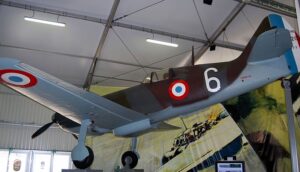Time Period: Pre-WW1
Country of Origin: France
Type: Monoplane, Prototypes and Experimental, General Purpose Aircraft
Manufacturer: Louis Blériot
Blériot XI Aircraft Overview
The Blériot XI is a historic French aircraft that is most famous for being the first airplane to cross the English Channel. Designed and built by French aviation pioneer Louis Blériot in 1909, the Blériot XI was a single-engine monoplane with a wooden frame covered in fabric.
The aircraft had a wingspan of 7.8 meters and was powered by a 25-horsepower Anzani engine, which gave it a top speed of around 65 miles per hour. The Blériot XI had an open cockpit and was steered using a stick and rudder pedals.
On July 25, 1909, Louis Blériot piloted the Blériot XI across the English Channel from Calais, France, to Dover, England, in a flight that lasted just over 37 minutes. The successful crossing of the English Channel was a major milestone in the history of aviation, and the Blériot XI became one of the most famous and influential aircraft of its time.
The Blériot XI was widely used in the early days of aviation for a variety of purposes, including military reconnaissance, aerial photography, and even mail delivery. It was also used by several countries in the First World War, primarily as a reconnaissance aircraft. Today, a number of Blériot XIs still exist, many of them preserved in museums and private collections around the world.
Blériot XI Specifications
- Crew: 1
- Length: 7.62 m (25 ft 0 in)
- Wingspan: 7.79 m (25 ft 7 in)
- Height: 2.69 m (8 ft 10 in)
- Wing area: 14 m2 (150 sq ft)
- Empty weight: 230 kg (507 lb)
- Powerplant: 1 × Anzani 3-cyl. fan 3-cyl. air-cooled fan-style radial piston engine, 19 kW (25 hp)
- Propellers: 2-bladed Chauvière Intégrale, 2.08 m (6 ft 10 in) diameter.
Blériot XI Performance
- Maximum speed: 75.6 km/h (47.0 mph, 40.8 kn)
- Service ceiling: 1,000 m (3,300 ft)









